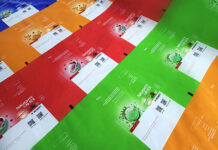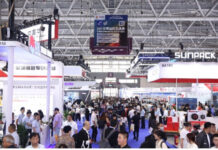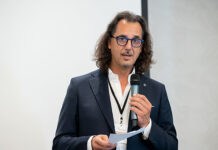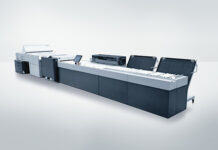Packaging in Italy is the Italian agency specialized exclusively in the development of sales-oriented packaging. Its owner Michele Bondani is the only Italian representative who is part of the international Trout & Partners network, whose founder Jack Trout is the architect of the development of brand positioning theory
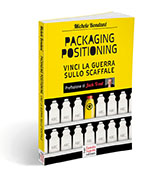
The shelves of supermarkets represent for companies that produce goods of any type an increasingly complex challenge.
The purchase process, as known, takes place in an increasingly reduced period of time and very often, despite the buyer has prepared his nice shopping list at home, the final decision takes place in a few seconds in front of the product at point of sale.
In all this, packaging plays a leading role, and is the element capable of triggering the brain-hand connection, to take one package rather than another and put it in the shopping cart.
But what’s behind all this?
There are numerous communication agencies, which along with many services also offer packaging design services, then there is someone who, to distinguish himself from the immense offer of the market, has decided instead to focus exclusively on the study and development of sales-oriented packaging.
We are talking about Packaging in Italy, founded by Michele Bondani, author of several publications among which his most successful book is “Packaging Positioning: Win the war on the shelf” (with the preface by Jack Trout and available on Amazon), and blog manager, through which he talks about his own activities and successful case histories. And it is precisely through his blog that I came into contact for the first time with Michele Bondani, being literally fascinated by his reality, by the numerous successful contributions published and above all by the video pills published on his you-tube channel with direct testimonials of brand-owners, and with many successful packaging that we all have in home pantry.
“The rules of positioning are very clear from a theoretical point of view; in practice, in their application we find great differences depending on who applies them. Each designer has his or her own style, and according to the project you are working on, there are different ways to follow in order to reach the final result, which for everyone must to helping your customer achieve sales objectives. This is the only index on which it is possible to evaluate whether a positioning job has been done well or not”, says Michele Bondani.
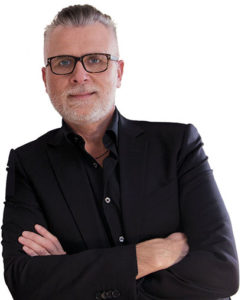 FACE TO FACE WITH MICHELE BONDANI, OWNER OF PACKAGING IN ITALY
FACE TO FACE WITH MICHELE BONDANI, OWNER OF PACKAGING IN ITALY
Where does this idea of specialization come from?
“We specialize in packaging design because our goal is to have a know-how that can help customers succeed in sales through the packaging that we design for them. We take creativity for granted and must not be the starting point of a project. To be successful today in the supermarket, you have to literally get the product out of the shelf, this is the thing that mainly interests our customers. This is what we do: packaging positioning, that is our discipline born from the extension of brand positioning concept”.
What is the design for the positioning of the packaging?
“We start from the assumption that there are infinite products on the market today, all of them excellent in quality. But we do not care about quality, which we take for granted, but we must be able to convey through the packaging a differentiation perceived by the consumer. Our motto is: there is no quality product if the packaging does not transmit the quality of the product.
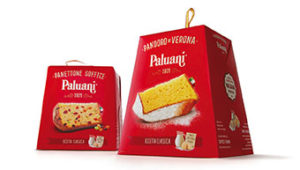 Unlike many agencies that offer generic marketing and communication services, we only deal with product packaging design and we do it starting from its specific characteristics, identifying its differentiating uniqueness, underlining and making it immediately understandable to the consumer. To all this we add a detailed analysis of possible consumers and their specific purchasing habits, to give a correct packaging that positions the product as the first in its category. The end result is the sure increase in sales of product, obtained thanks to a package scientifically studied to differentiate itself from the competition and to generate constant and uninterrupted profits”.
Unlike many agencies that offer generic marketing and communication services, we only deal with product packaging design and we do it starting from its specific characteristics, identifying its differentiating uniqueness, underlining and making it immediately understandable to the consumer. To all this we add a detailed analysis of possible consumers and their specific purchasing habits, to give a correct packaging that positions the product as the first in its category. The end result is the sure increase in sales of product, obtained thanks to a package scientifically studied to differentiate itself from the competition and to generate constant and uninterrupted profits”.
How do you approach a new project and what are the secrets for a successful case history?
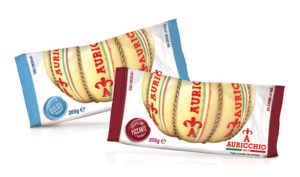 “We approach the development of packaging scientifically and aimed at selling the product. Especially for the first purchase of a new product, or in any case of a product that the consumer sees or is thinking of buying for the first time, the sensations transmitted by the packaging are absolutely fundamental for the purchase process. The consumer wants to understand what he is buying, and the brand must be able to communicate correctly and must do so by finding the most precious of its allies in the packaging of its product. Packaging positioning is therefore the science aimed at sales of the product itself, through packaging that has “a genetic profit”, that is, that brings together the uniqueness of the product, naming, visual, format and structure. A packaging that possesses genetic profit is to be considered immortal, as it generates sales for eternity.
“We approach the development of packaging scientifically and aimed at selling the product. Especially for the first purchase of a new product, or in any case of a product that the consumer sees or is thinking of buying for the first time, the sensations transmitted by the packaging are absolutely fundamental for the purchase process. The consumer wants to understand what he is buying, and the brand must be able to communicate correctly and must do so by finding the most precious of its allies in the packaging of its product. Packaging positioning is therefore the science aimed at sales of the product itself, through packaging that has “a genetic profit”, that is, that brings together the uniqueness of the product, naming, visual, format and structure. A packaging that possesses genetic profit is to be considered immortal, as it generates sales for eternity.
We do not provide a standard and equal service for all our customers, since our approach to packaging requires that the customer be ready to question some choices concerning product marketing. In fact, packaging as a direct marketing element within the store cannot arise without being perfectly integrated with the corporate marketing choices. For us at Packaging in Italy, the use of creative tools is always a point of arrival, never a starting point. This is why we move on to the design phase only after a careful analysis of precise strategic parameters.
At that point we use creativity, putting it at the service of the message that we defined scientifically in the study phase”.
What is the most compelling project you have created?
“Having to choose a project among all those made is impossible, as it would be for a father who would be asked which of his children he prefers. Therefore I would say that the most compelling packaging that I have created is always the latest. I also realize that the project 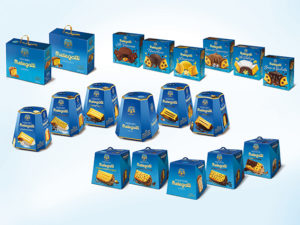 I thought was perfect when it was made, after a few years would require changes to keep up with times and new needs. One of the latest projects we have been working on lately, which has given me enormous satisfaction, has been the positioning of Grana Padano as one of the 4-5 Italian brands with the most visibility worldwide.
I thought was perfect when it was made, after a few years would require changes to keep up with times and new needs. One of the latest projects we have been working on lately, which has given me enormous satisfaction, has been the positioning of Grana Padano as one of the 4-5 Italian brands with the most visibility worldwide.
We always look forward to the moment of the launch of a project we have worked on, to test the results on the field and understand if we have managed to achieve the goal”.
Regarding the choice of the material to be used, are there basic rules according to the product to be packaged?
“There may be basic rules on the use of materials but referring to the product category rather than to the product itself. For example, the category of wines is not impossible to position, but the mentality of the producer and the consumer should be disrupted to offer something different in comparison to what we see today. I have a project ready in this sense, but I have not yet had the pleasure of realizing it with anyone, who knows if in the future some label or cellar will experiment an innovative positioning of a product like wine.
Bottles of a certain type, special papers but above all labels finishing help to recognize at first sight a premium and quality product, thus communicating to the consumer a product of a certain level. If the same quality wine were not packaged in a certain way, without labels and so on, it would not convey the same sensation to the consumer. There are in principle some rules about packaging design (color codes, finishing, windows) which must consider the reference product category”.
Personally, what type of material do you prefer to use for your creations and why?
“I love to experiment and innovate. Thanks to the intuitions and skills acquired in 30 years of experience, I try to bring the know-how and successful best practices into categories in which new solutions have never been tested. There are innovative materials and solutions that can be applied in different sectors, bringing innovation”.
Sustainability and packaging:
what to do to avoid slipping on a banana peel?
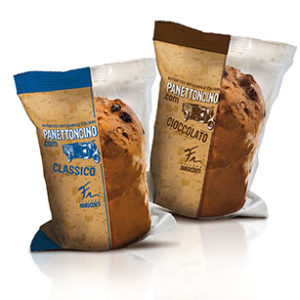 “We are all called to commit ourselves to greater packaging sustainability. However, there are still complex situations, final distributors and sustainability has a higher cost than the standard, especially if we talk about materials. Certainly it is possible to work to decrease the amount of packaging used to package the product, for example the overpackaging which involves the packaging of children’s games”.
“We are all called to commit ourselves to greater packaging sustainability. However, there are still complex situations, final distributors and sustainability has a higher cost than the standard, especially if we talk about materials. Certainly it is possible to work to decrease the amount of packaging used to package the product, for example the overpackaging which involves the packaging of children’s games”.
What is your relationship with printing and converting companies. Do you have a network of suppliers or is the customer who is going to produce your packs?
“For company policy we do not deal with the printing phase, although obviously we have a network of printing and converting companies that we know very well, and that we can possibly put in contact with our customer according to the specialization that is required”.




